Innuos PULSAR is the Portuguese company’s latest pure streamer infused with the latest bits already field-tested in the Statement Next-Gen flagship. Now it’s time to investigate this promising design. Enjoy!
Graceful downscaling
When the local Audio Video Show is about to close for a year, I don’t go home unlike most visitors. Then arises the perfect opportunity to return to one or two previously cherry-picked rooms, talk to their hosts and listen to some music of my choice in reasonable comfort. Some such chats add kilograms to the reviewer backpack. If you’re local press, intercepting a loaner product straight from the show simplifies logistics, which is what I did after the recent Warsaw gig. The backpack was far from enough, though. Chaps at the Innuos room had two not exactly small products boxed for collection, so it was the cart o’clock. The Statement Next-Gen already had its story published here. Now is the time to take for a spin its more compact sibling named PULSAR. Prior to diving in let’s recap the Innuos roster. In its early days this company had the following server/streamer products from the least to most expensive; ZENmini, ZEN and ZENith. Then their Mk2 and Mk3 versions showed up along with a 16V/3A linear PSU for the ZENmini. Somewhere between these releases the Phoenix NET network switch and Phoenix USB reclocker saw the daylight. Then came the homebrewed software platform InnuOS 2.0 and Sense app for iOS and Android. This portfolio packed with well-received products secured the manufacturer’s position in the industry. Then team Innuos launched their no-compromise twin-box design – Statement. Fast forward several springs to early 2023, when reworks on this flagship’s power supply called for its superior version baptized Statement Next-Gen. Then the Innuos lineup branched out into a brand new product series comprised of models PULSEmini (€1’149), PULSE (€2’999) and this report’s PULSAR (€6’399). All are network players without the server component, so music has to be either streamed to them from the cloud, external storage or server. The PULSE family has some twists. Innuos PULSEmini features in-built DAC and PULSE accommodates three digital outs in total. The PULSAR rocks one kosher USB out and is the direct beneficiary of the recent upgrade pack for the Statement’s PSU box.
Prior to diving in let’s recap the Innuos roster. In its early days this company had the following server/streamer products from the least to most expensive; ZENmini, ZEN and ZENith. Then their Mk2 and Mk3 versions showed up along with a 16V/3A linear PSU for the ZENmini. Somewhere between these releases the Phoenix NET network switch and Phoenix USB reclocker saw the daylight. Then came the homebrewed software platform InnuOS 2.0 and Sense app for iOS and Android. This portfolio packed with well-received products secured the manufacturer’s position in the industry. Then team Innuos launched their no-compromise twin-box design – Statement. Fast forward several springs to early 2023, when reworks on this flagship’s power supply called for its superior version baptized Statement Next-Gen. Then the Innuos lineup branched out into a brand new product series comprised of models PULSEmini (€1’149), PULSE (€2’999) and this report’s PULSAR (€6’399). All are network players without the server component, so music has to be either streamed to them from the cloud, external storage or server. The PULSE family has some twists. Innuos PULSEmini features in-built DAC and PULSE accommodates three digital outs in total. The PULSAR rocks one kosher USB out and is the direct beneficiary of the recent upgrade pack for the Statement’s PSU box.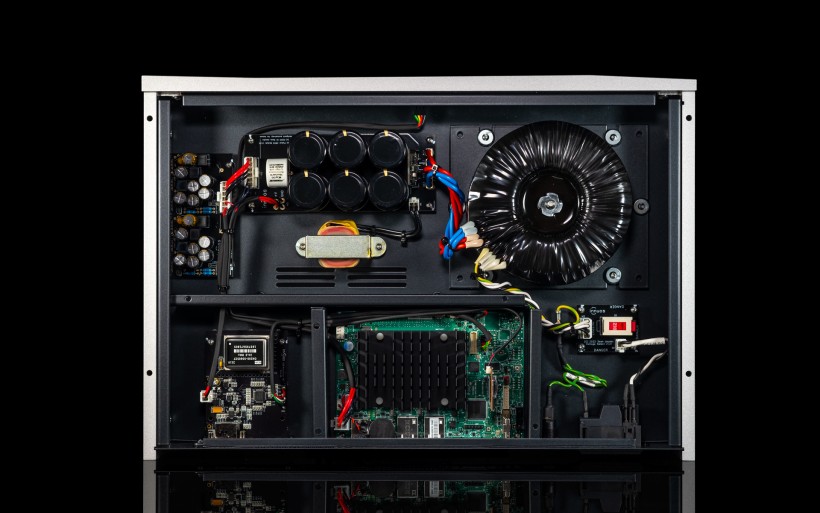 The product wrapped in a cloth bag was stored between foamy liners inside a double cardboard. Accessories inside the box include a quick start guide plus a standard-issue 2m Ethernet cable and power cord. Either a tablet or smartphone are mandatory to use the PULSAR. It measures (W x D x H) 420 x 290 x 76mm and weighs just a hair above 10kg, so is fairly compact and surprisingly heavy. This network streamer natively outputs PCM/DSD data up to 32bit/768kHz/DSD512 and also operates as a MQA renderer/decoder. Power draw in idle/peak is 7/13.7W respectively. The PULSAR’s chassis is all around bead-blasted anodized CNC-milled aluminium with a subtle acrylic insert inlaid on its top, while bent steel sheets form cheeks and top covers of the other two products from the PULSE range. All its inhabitants can be had in any color of your choice as long as it’s either matte silver or black.
The product wrapped in a cloth bag was stored between foamy liners inside a double cardboard. Accessories inside the box include a quick start guide plus a standard-issue 2m Ethernet cable and power cord. Either a tablet or smartphone are mandatory to use the PULSAR. It measures (W x D x H) 420 x 290 x 76mm and weighs just a hair above 10kg, so is fairly compact and surprisingly heavy. This network streamer natively outputs PCM/DSD data up to 32bit/768kHz/DSD512 and also operates as a MQA renderer/decoder. Power draw in idle/peak is 7/13.7W respectively. The PULSAR’s chassis is all around bead-blasted anodized CNC-milled aluminium with a subtle acrylic insert inlaid on its top, while bent steel sheets form cheeks and top covers of the other two products from the PULSE range. All its inhabitants can be had in any color of your choice as long as it’s either matte silver or black.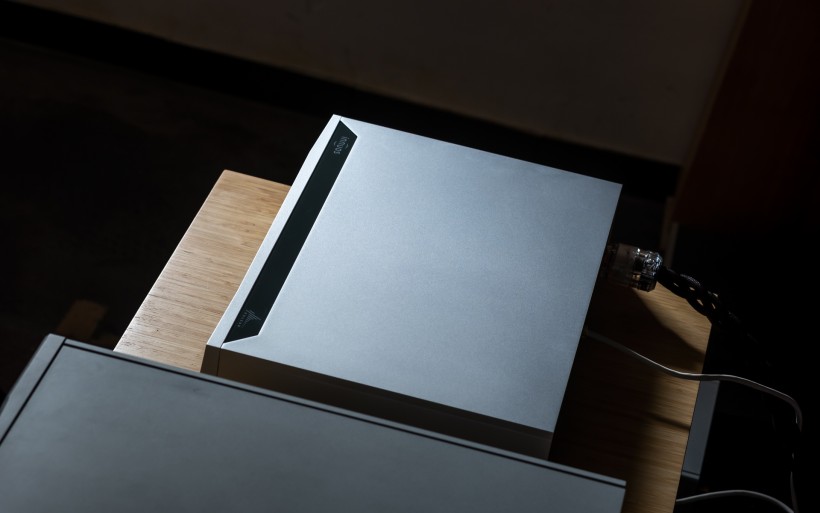 All Innuos products released prior to the PULSE series had their machined front panels comprised of four differently angled planes. This new series breaks that dress code by adding two extra tiles. Although the PULSAR looks somewhat different because of that, its styling still strongly suggests that only the designers of Innuos could come up with it. This small yet noticeable rework to the front panel tells us that they prefer refining the wheel instead of reinventing it, most likely to preserve the entire roster’s visual identity. Their previously released network affairs were minimalist designs with just one on/off button on the front and that’s it, which is okay considering that our smartphones or tablets become handy RC devices for them. The PULSAR pushes the manufacturer’s signature visual modesty further by hiding the on/off switch to the front’s underside. A LED just next to this easily accessible button fires on a flat surface below when the product is turned on and remains invisible from afar.
All Innuos products released prior to the PULSE series had their machined front panels comprised of four differently angled planes. This new series breaks that dress code by adding two extra tiles. Although the PULSAR looks somewhat different because of that, its styling still strongly suggests that only the designers of Innuos could come up with it. This small yet noticeable rework to the front panel tells us that they prefer refining the wheel instead of reinventing it, most likely to preserve the entire roster’s visual identity. Their previously released network affairs were minimalist designs with just one on/off button on the front and that’s it, which is okay considering that our smartphones or tablets become handy RC devices for them. The PULSAR pushes the manufacturer’s signature visual modesty further by hiding the on/off switch to the front’s underside. A LED just next to this easily accessible button fires on a flat surface below when the product is turned on and remains invisible from afar. The PULSAR’s locally perforated underbelly sits on three asymmetrically aligned anti-vibration pucks. The top cover held in place via four bolts is separated from the side panels and easily removable. The business end features a USB output to connect a DAC and four auxiliary USB ports for external storage. One of the two bridged RJ45 ports (LAN) in that area connects the product with a router, while the other (Ethernet) comes in handy when one wants to use i.e. a NAS. That way there’s no need to run twin long Ethernet cables from a router to the PULSAR. The service only output on HDMI, grounding post and the fused IEC inlet with the main on/off rocker close the list.
The PULSAR’s locally perforated underbelly sits on three asymmetrically aligned anti-vibration pucks. The top cover held in place via four bolts is separated from the side panels and easily removable. The business end features a USB output to connect a DAC and four auxiliary USB ports for external storage. One of the two bridged RJ45 ports (LAN) in that area connects the product with a router, while the other (Ethernet) comes in handy when one wants to use i.e. a NAS. That way there’s no need to run twin long Ethernet cables from a router to the PULSAR. The service only output on HDMI, grounding post and the fused IEC inlet with the main on/off rocker close the list.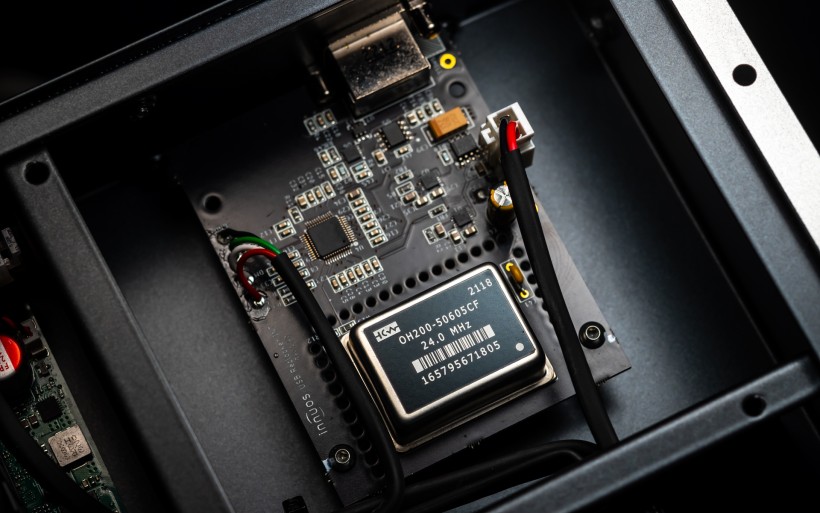 The view under the PULSAR’s bonnet is rewarding to say the least. Since this is essentially a PC, it houses a motherboard, CPU, memory and SSD drive, albeit cherry-picked for low noise and enough computing power to handle Innuos’ own software platform without hiccups. The main board customized for the Portuguese company accommodates Intel Quad Core N4200 CPU and 8GB of low-voltage DDR3L RAM with half of that dedicated for RAM playback exclusively. The SSD with the Linux-based InnuOS system is a pSLC (pseudo Single-Level Cell) drive for best durability and low operating noise. Although it is manufactured with TLC flash, the controllers in it act like SLC controllers, so they use one bit per cell instead of three. The advantage of this for audio is in the controller’s simplicity and lower latency. All of this wouldn’t work the way the doctor ordered without a decent power supply. The PULSAR has that heavily emphasized. A 300VA toroidal transformer has its center filled with resin to tame vibrations, while a SynShield-coated copper tape provides magnetic screening between windings. Three power rails independently feed the motherboard, SSD and USB reclocker. A large input choke provides nearly continual sinusoidal energy flux to six Mundorf caps (130’000μF in total). The company’s ARC6 (Active Rectification with 6 capacitors) module actively does the AC/DC conversion instead of passive Schottky diodes (the PULSE’s RECAP2 circuit has these) to net higher efficiency and lower heat and ripple. This circuit also lowers the impedance of the PSU, courtesy of the beefy capacitor bank. Suffice it to say, the view under the Statement Next-GEN’s hood is rather similar. Lastly, the PULSAR’s USB output integrates the awesome PhoenixUSB reclocker ‘lite’ powered by a custom CX regulator board and with the in-built Connor-Winfield 24MHz clock. The ‘lite’ version uses a single voltage line to feed both the clock and USB chip instead of separate rails for them.
The view under the PULSAR’s bonnet is rewarding to say the least. Since this is essentially a PC, it houses a motherboard, CPU, memory and SSD drive, albeit cherry-picked for low noise and enough computing power to handle Innuos’ own software platform without hiccups. The main board customized for the Portuguese company accommodates Intel Quad Core N4200 CPU and 8GB of low-voltage DDR3L RAM with half of that dedicated for RAM playback exclusively. The SSD with the Linux-based InnuOS system is a pSLC (pseudo Single-Level Cell) drive for best durability and low operating noise. Although it is manufactured with TLC flash, the controllers in it act like SLC controllers, so they use one bit per cell instead of three. The advantage of this for audio is in the controller’s simplicity and lower latency. All of this wouldn’t work the way the doctor ordered without a decent power supply. The PULSAR has that heavily emphasized. A 300VA toroidal transformer has its center filled with resin to tame vibrations, while a SynShield-coated copper tape provides magnetic screening between windings. Three power rails independently feed the motherboard, SSD and USB reclocker. A large input choke provides nearly continual sinusoidal energy flux to six Mundorf caps (130’000μF in total). The company’s ARC6 (Active Rectification with 6 capacitors) module actively does the AC/DC conversion instead of passive Schottky diodes (the PULSE’s RECAP2 circuit has these) to net higher efficiency and lower heat and ripple. This circuit also lowers the impedance of the PSU, courtesy of the beefy capacitor bank. Suffice it to say, the view under the Statement Next-GEN’s hood is rather similar. Lastly, the PULSAR’s USB output integrates the awesome PhoenixUSB reclocker ‘lite’ powered by a custom CX regulator board and with the in-built Connor-Winfield 24MHz clock. The ‘lite’ version uses a single voltage line to feed both the clock and USB chip instead of separate rails for them.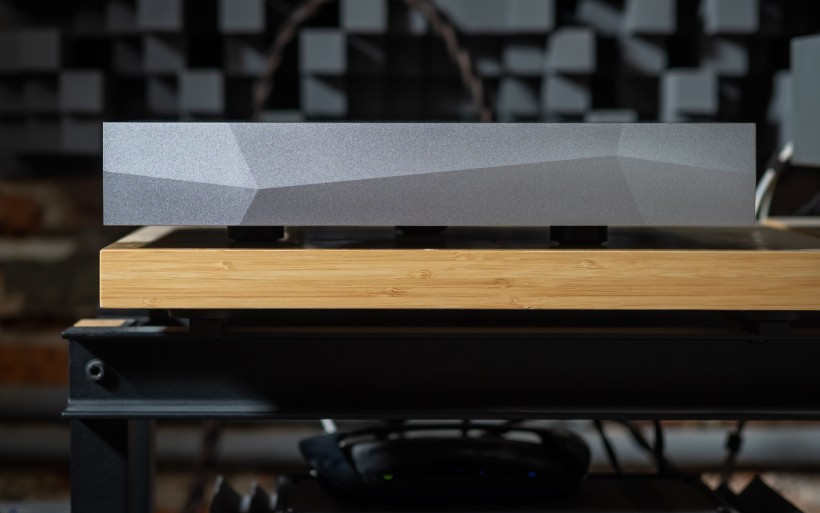 Although the PULSAR doesn’t feature a CD slot, standalone PSU box or server component, its internals imply it being the Statement Next-Gen junior nonetheless. The lack of these utilities doesn’t make it crippled. This streamlined Innuos lasciviously winks at enthusiasts who play music mainly from the cloud, and who already have heard the flagship model and found it terrific. On top of that, it runs on the best streaming software I know. The manufacturer’s in-house developed Sense app is reliable, stable as a rock, easy to use and all in all brilliant. It also allows using the PULSAR in two different modes. The standalone option means music playback from a NAS, Internet radio or streaming services through this app. The endpoint mode turns the machine into a zone of a separate music server (i.e. HQ Player, Innuos’ own server, Roon or any other running LMS) controlled by a different app. The takeaway is that the PULSAR is hardly a niche design, while its interior clearly shows some serious sonic aspirations. It’s time to finally investigate these.
Although the PULSAR doesn’t feature a CD slot, standalone PSU box or server component, its internals imply it being the Statement Next-Gen junior nonetheless. The lack of these utilities doesn’t make it crippled. This streamlined Innuos lasciviously winks at enthusiasts who play music mainly from the cloud, and who already have heard the flagship model and found it terrific. On top of that, it runs on the best streaming software I know. The manufacturer’s in-house developed Sense app is reliable, stable as a rock, easy to use and all in all brilliant. It also allows using the PULSAR in two different modes. The standalone option means music playback from a NAS, Internet radio or streaming services through this app. The endpoint mode turns the machine into a zone of a separate music server (i.e. HQ Player, Innuos’ own server, Roon or any other running LMS) controlled by a different app. The takeaway is that the PULSAR is hardly a niche design, while its interior clearly shows some serious sonic aspirations. It’s time to finally investigate these.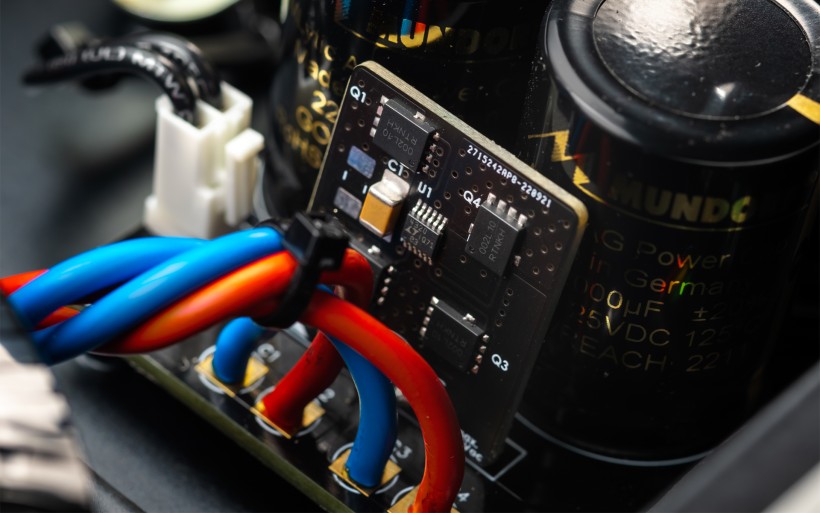 The PULSAR didn’t have it easy in my listening room. Naturally it had to fight with the thrice as dear Statement Next-Gen, which was promoted to my daily driver in late February 2024. The recent comparison of the current Innuos flagship to its older version was a breeze on hardware swaps. The PULSAR and its beefier twin-box kin run on the same software, so today’s tussle promised similar ease. The manufacturer’s Sense app instantly listed both these machines upon connecting them to my network switch. It also allowed for selecting my streaming device of choice without router resets, downtime or crashes, which translated into high convenience and enjoyable overall experience.
The PULSAR didn’t have it easy in my listening room. Naturally it had to fight with the thrice as dear Statement Next-Gen, which was promoted to my daily driver in late February 2024. The recent comparison of the current Innuos flagship to its older version was a breeze on hardware swaps. The PULSAR and its beefier twin-box kin run on the same software, so today’s tussle promised similar ease. The manufacturer’s Sense app instantly listed both these machines upon connecting them to my network switch. It also allowed for selecting my streaming device of choice without router resets, downtime or crashes, which translated into high convenience and enjoyable overall experience.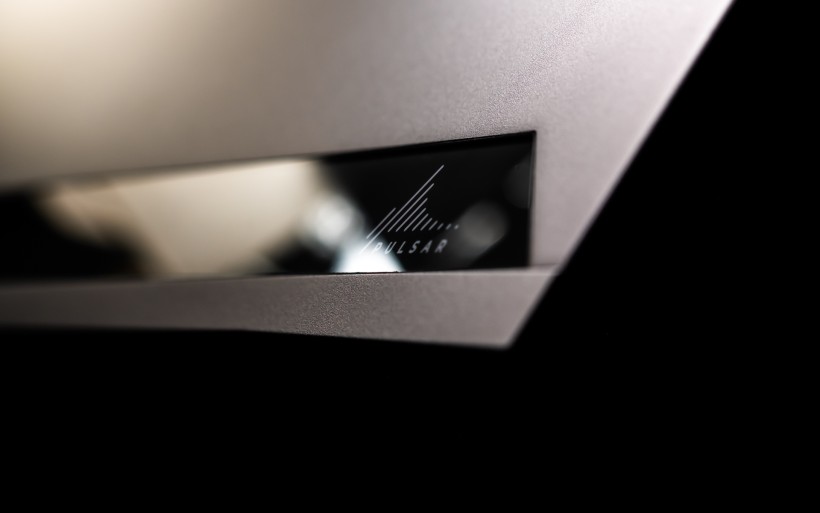 A USB cable move between the Statement and PULSAR was the only manual activity on the menu and hardly a chore all things considered. The two Innuos products instantly made a firm handshake with my DAC. I didn’t even have to adjust volume on the 915R preamp or mute it. Since the PULSAR had to see an external network storage and said nay to USB drives, initially I enjoyed the idea of exploiting the Statement’s own 2TB warehouse for this purpose. Still, using a €20’000 device only as a NAS for a €6’399 streamer seemed a highly unrealistic scenario. My home Synology NAS was a far more reasonable companion for the latter, so I was about to proceed. On the 16th February the entire matter got even simpler. Then the 2.6 InnuOS update saw the daylight and along with it the PULSAR gained the ability to play music directly from USB drives. Huzzah! Now a quick migration of several albums from the Statement Next-Gen was possible and the game was afoot.
A USB cable move between the Statement and PULSAR was the only manual activity on the menu and hardly a chore all things considered. The two Innuos products instantly made a firm handshake with my DAC. I didn’t even have to adjust volume on the 915R preamp or mute it. Since the PULSAR had to see an external network storage and said nay to USB drives, initially I enjoyed the idea of exploiting the Statement’s own 2TB warehouse for this purpose. Still, using a €20’000 device only as a NAS for a €6’399 streamer seemed a highly unrealistic scenario. My home Synology NAS was a far more reasonable companion for the latter, so I was about to proceed. On the 16th February the entire matter got even simpler. Then the 2.6 InnuOS update saw the daylight and along with it the PULSAR gained the ability to play music directly from USB drives. Huzzah! Now a quick migration of several albums from the Statement Next-Gen was possible and the game was afoot. Since the Innuos Statement Next-Gen is particularly important in the context of the company’s PULSAR platform, it’s fitting to start my sound impressions with a brief recap of this flagship product. In its review I remarked that on UI it was as sorted as its predecessor. Highly. In fact, I couldn’t tell them apart. The Next-Gen however sounded significantly better on many fronts and quickly went beyond mild sonic touchups here and there. This easily detectable performance hike was large to say the least. The firm observation where the Next-Gen scored higher came after mere one rotation. The fundamental differences were obvious. The original Statement never was a weakling on bass control, reach and crack. The Statement Next-Gen didn’t change this either yet sounded noticeably more powerful and visceral still, as if its engine grew larger to reap the associated benefits; higher elasticity, effortlessness, momentum and immediacy. These traits were particularly apparent on tracks “Keep It Together” by How To Destroy Angels and Acid’s “Creeper”. Early bass on these songs can really be felt inside a chest if only speakers allow. With the Next-Gen on the job this sensation was more pronounced and hardly subtle, so very meaningful in my opinion. The upgraded Statement pulled this without penalizing bass in any way, on the contrary. My system’s downstairs with this Innuos engaged felt juicier, tighter, quicker and all in all simply better.
Since the Innuos Statement Next-Gen is particularly important in the context of the company’s PULSAR platform, it’s fitting to start my sound impressions with a brief recap of this flagship product. In its review I remarked that on UI it was as sorted as its predecessor. Highly. In fact, I couldn’t tell them apart. The Next-Gen however sounded significantly better on many fronts and quickly went beyond mild sonic touchups here and there. This easily detectable performance hike was large to say the least. The firm observation where the Next-Gen scored higher came after mere one rotation. The fundamental differences were obvious. The original Statement never was a weakling on bass control, reach and crack. The Statement Next-Gen didn’t change this either yet sounded noticeably more powerful and visceral still, as if its engine grew larger to reap the associated benefits; higher elasticity, effortlessness, momentum and immediacy. These traits were particularly apparent on tracks “Keep It Together” by How To Destroy Angels and Acid’s “Creeper”. Early bass on these songs can really be felt inside a chest if only speakers allow. With the Next-Gen on the job this sensation was more pronounced and hardly subtle, so very meaningful in my opinion. The upgraded Statement pulled this without penalizing bass in any way, on the contrary. My system’s downstairs with this Innuos engaged felt juicier, tighter, quicker and all in all simply better. The Next-Gen’s greater willingness to land rapid bass blows also manifested on my playlist’s funky bits. The disparity between the two platforms was large i.e. on Altın Gün’s song “Doktor Civanım”. This song doesn’t sport infra bass, so both devices reached as deep. With the Next-Gen in my system this and several other tracks were sensibly more immediate still. The higher-tiered Innuos had means to start and stop each individual bass jab quicker and effectively land wider dynamics. That naturally made music more alive. The non-audiophile lingo has a far simpler explanation. On “Doktor Civanım” my foot tapped far more with the Next-Gen than with its older kin. Ditto Altın Gün’s explosive raw live take on the calm innocent album version of “Kırşehir’in Gülleri”. On such intense energetic fare the top shelf Innuos was armed with larger claws so to speak. It packed more bite, RPM and enjoyable directness atop all else it did, which effectively produced grander beefier snappier sound that secured the noticeably higher overall excitement level. On Mike Oldfield’s “Taurus III” at high volume it went through the roof.
The Next-Gen’s greater willingness to land rapid bass blows also manifested on my playlist’s funky bits. The disparity between the two platforms was large i.e. on Altın Gün’s song “Doktor Civanım”. This song doesn’t sport infra bass, so both devices reached as deep. With the Next-Gen in my system this and several other tracks were sensibly more immediate still. The higher-tiered Innuos had means to start and stop each individual bass jab quicker and effectively land wider dynamics. That naturally made music more alive. The non-audiophile lingo has a far simpler explanation. On “Doktor Civanım” my foot tapped far more with the Next-Gen than with its older kin. Ditto Altın Gün’s explosive raw live take on the calm innocent album version of “Kırşehir’in Gülleri”. On such intense energetic fare the top shelf Innuos was armed with larger claws so to speak. It packed more bite, RPM and enjoyable directness atop all else it did, which effectively produced grander beefier snappier sound that secured the noticeably higher overall excitement level. On Mike Oldfield’s “Taurus III” at high volume it went through the roof.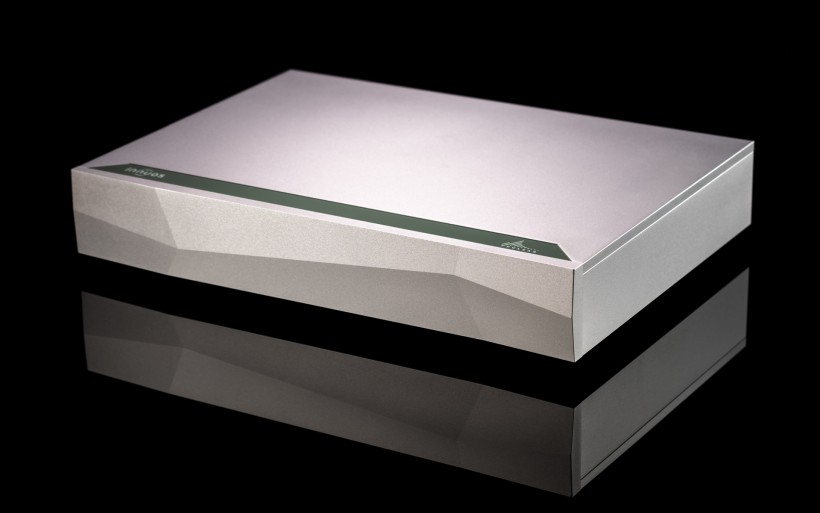 Several comparative sessions provided enough evidence to consider the Next-Gen as the original Statement’s sonically more advanced and refined version, but that was expected. More importantly, the latter already proved highly accomplished on might, speed and shove, so witnessing how much more potent its souped-up sibling was on these counts still was a pleasant surprise. Audible progress always is a nice thing to experience, but raising the performance ceiling isn’t a trivial task and that’s exactly what the Next-Gen did. The final ace up its sleeve came in form of its larger spatial canvas busy with the key instrumental and vocal frames more articulated, clearer and supported by more authoritative, tectonic and harder bass blows. What really had me sold was the way how the Next-Gen presented virtual sound sources. It combined more distinctive outlines with juicier internal textures to effectively secure the sensible spatial vividness boost. Upon returning to the regular Statement i.e. female voices felt a tad withdrawn thus less present, not quite as alive, on some recordings also icier and all in all less posh. The substantial difference in bass quality and vigor between the two contestants wasn’t a deal-breaker. Here the original Statement was as good as ever. Upon using it again after a day or two my system didn’t collapse. The disparity on imaging and textural qualities however was a different story. That didn’t let go. In these regards the Next-Gen reigned supreme and surpassed its predecessor just about enough to impress far more. Here’s the kicker. Although the former is the best streamer I’d sampled to date, early days spent exclusively with the PULSAR loaner left me rather puzzled and admittedly also stunned.
Several comparative sessions provided enough evidence to consider the Next-Gen as the original Statement’s sonically more advanced and refined version, but that was expected. More importantly, the latter already proved highly accomplished on might, speed and shove, so witnessing how much more potent its souped-up sibling was on these counts still was a pleasant surprise. Audible progress always is a nice thing to experience, but raising the performance ceiling isn’t a trivial task and that’s exactly what the Next-Gen did. The final ace up its sleeve came in form of its larger spatial canvas busy with the key instrumental and vocal frames more articulated, clearer and supported by more authoritative, tectonic and harder bass blows. What really had me sold was the way how the Next-Gen presented virtual sound sources. It combined more distinctive outlines with juicier internal textures to effectively secure the sensible spatial vividness boost. Upon returning to the regular Statement i.e. female voices felt a tad withdrawn thus less present, not quite as alive, on some recordings also icier and all in all less posh. The substantial difference in bass quality and vigor between the two contestants wasn’t a deal-breaker. Here the original Statement was as good as ever. Upon using it again after a day or two my system didn’t collapse. The disparity on imaging and textural qualities however was a different story. That didn’t let go. In these regards the Next-Gen reigned supreme and surpassed its predecessor just about enough to impress far more. Here’s the kicker. Although the former is the best streamer I’d sampled to date, early days spent exclusively with the PULSAR loaner left me rather puzzled and admittedly also stunned.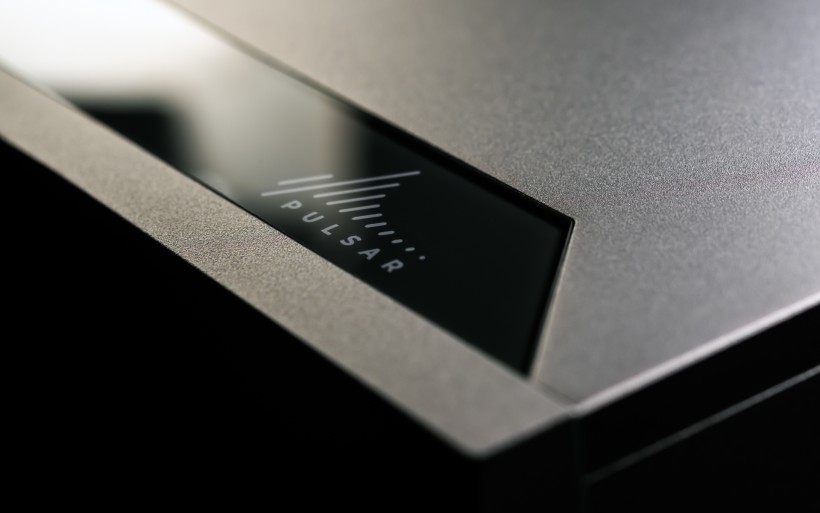 To my ears the Innuos Next-Gen’s sound doesn’t feature any weak links. It’s as accomplished on energy provision, dynamics, snap, precision, clarity and articulation as it is on textural fronts and all other traits which make music enjoyable to listen to. This platform also isn’t heavily biased in any specific way, so it won’t steer a system’s sound in any particular direction. Rather, it’ll provide support for the downstream hardware no matter how it sounds like. In that sense the Next-Gen’s voicing is as transparent as it is elegant and the PULSAR’s sound follows suit here. Early on these two products struck me as very much alike on sonics, so upon using the latter for the first time I had no clue what to make of it. Considering the significant price difference between them and prior to any auditions, I simply looked forward to mapping the flagship’s superiority on quite a few counts, listing these advantages and calling it a day. That wasn’t in the cards. The PULSAR is really good, to a point where many listeners would’ve registered its performance as somewhat different versus the Next-Gen’s yet not inferior. My impressions of this one-box affair changed over the course of several weeks and now I know why its dearer stablemate is sonically better still. This however doesn’t steal the former’s thunder in the slightest.
To my ears the Innuos Next-Gen’s sound doesn’t feature any weak links. It’s as accomplished on energy provision, dynamics, snap, precision, clarity and articulation as it is on textural fronts and all other traits which make music enjoyable to listen to. This platform also isn’t heavily biased in any specific way, so it won’t steer a system’s sound in any particular direction. Rather, it’ll provide support for the downstream hardware no matter how it sounds like. In that sense the Next-Gen’s voicing is as transparent as it is elegant and the PULSAR’s sound follows suit here. Early on these two products struck me as very much alike on sonics, so upon using the latter for the first time I had no clue what to make of it. Considering the significant price difference between them and prior to any auditions, I simply looked forward to mapping the flagship’s superiority on quite a few counts, listing these advantages and calling it a day. That wasn’t in the cards. The PULSAR is really good, to a point where many listeners would’ve registered its performance as somewhat different versus the Next-Gen’s yet not inferior. My impressions of this one-box affair changed over the course of several weeks and now I know why its dearer stablemate is sonically better still. This however doesn’t steal the former’s thunder in the slightest. Each time I’m about to sample an expensive audio product, I hope to hear a particular type of elegance comprised of background blackness, textural moisture, big tone and loads of casually presented tiny details. These traits keep fatigue at the door and make music pretty and easygoing. They also serve as the foundation upon which precise imaging, clarity, agility and wide dynamics flourish. Although most top shelf audio products lean towards specific asset groups, all have the aforementioned elegant base inbuilt. If it’s not there, inherently speedy audio hardware becomes abnormally forward, nervous, piercing, hollow, dry and grainy, while devices tuned for warmth and heft emerge as stuffy, fuzzy, spatially constrained and sensibly slow. Just to state the obvious, this essential care package has its roots in quality power supplies. The two Statement versions nicely stress that point. Being a realist I didn’t expect this foundational goodness strongly pronounced in a product priced like today’s hero, which proved as gifted as the Statement Next-Gen in this regard and had me corrected on the matter. That’s also the key reason why initially I thought of this pure streamer as being sonically better than its price would suggest.
Each time I’m about to sample an expensive audio product, I hope to hear a particular type of elegance comprised of background blackness, textural moisture, big tone and loads of casually presented tiny details. These traits keep fatigue at the door and make music pretty and easygoing. They also serve as the foundation upon which precise imaging, clarity, agility and wide dynamics flourish. Although most top shelf audio products lean towards specific asset groups, all have the aforementioned elegant base inbuilt. If it’s not there, inherently speedy audio hardware becomes abnormally forward, nervous, piercing, hollow, dry and grainy, while devices tuned for warmth and heft emerge as stuffy, fuzzy, spatially constrained and sensibly slow. Just to state the obvious, this essential care package has its roots in quality power supplies. The two Statement versions nicely stress that point. Being a realist I didn’t expect this foundational goodness strongly pronounced in a product priced like today’s hero, which proved as gifted as the Statement Next-Gen in this regard and had me corrected on the matter. That’s also the key reason why initially I thought of this pure streamer as being sonically better than its price would suggest. The first fight between the PULSAR and Statement Next-Gen left me largely in the blank. Utilities aside, both these products truly were equals on inky backdrop, smoothness, textural provision, imaging size and its complexity. I sensed some mild differences yet nothing major worth holding on to. Some two weeks later the PULSAR’s off-the-charts softness, elasticity and organic flavoring shone through as its most prominent virtues, which was the green light to mark it as an artful charmer more than a fierce wildling. If it were a DAC, the R-2R architecture would’ve been its beating heart. The attitude of this audibly fancy sort had some implications. Most ladder DACs inherently groomed for peacock-level posh flavor excel where long hours of fatigue-free listening are in demand. Here high relaxation, softness and politeness are prioritized over bite, sparks, vigor, dynamics, immediacy, spatial drama and detail retrieval. To my ears that was the PULSAR’s fetching angle, while the Statement Next-Gen also infused with the same emotionally loaded core had all the sporty traits expanded further. To simplify, the former’s personality was more polite, relaxed and a touch darker, while the latter secured the extra bite, higher resolution, intensity and wider dynamics without any shyness on color, mood or romance. That’s the key audible gap between these products.
The first fight between the PULSAR and Statement Next-Gen left me largely in the blank. Utilities aside, both these products truly were equals on inky backdrop, smoothness, textural provision, imaging size and its complexity. I sensed some mild differences yet nothing major worth holding on to. Some two weeks later the PULSAR’s off-the-charts softness, elasticity and organic flavoring shone through as its most prominent virtues, which was the green light to mark it as an artful charmer more than a fierce wildling. If it were a DAC, the R-2R architecture would’ve been its beating heart. The attitude of this audibly fancy sort had some implications. Most ladder DACs inherently groomed for peacock-level posh flavor excel where long hours of fatigue-free listening are in demand. Here high relaxation, softness and politeness are prioritized over bite, sparks, vigor, dynamics, immediacy, spatial drama and detail retrieval. To my ears that was the PULSAR’s fetching angle, while the Statement Next-Gen also infused with the same emotionally loaded core had all the sporty traits expanded further. To simplify, the former’s personality was more polite, relaxed and a touch darker, while the latter secured the extra bite, higher resolution, intensity and wider dynamics without any shyness on color, mood or romance. That’s the key audible gap between these products. I purposely keep away from crunching sound impressions into numbers, but this one time I’ll make an exception. If the Statement Next-Gen’s sonic performance is 100%, then the PULSAR sits at comfortable 90% give or take, which is not a lot considering the differences between their retail price and utilities. This aside, the more investigative former dissects music on a proportionately deeper level. Should you wish to have the full insight into each passage, vocal line, background shimmers and sparks upstairs, it’ll gladly deliver. This two-chassis design will also portray rawness and ferocity embedded in heavy genres without any restraint. The PULSAR brilliantly handles such music too, but in fashion not quite as intense, immediate and dynamically broad. Instead it aims to please for hours to come no matter what’s on the playlist. This Innuos also executes said task so expertly, that upon using it after the Next-Gen there’s no pain at all, just a touch milder and romantically more involved flavor.
I purposely keep away from crunching sound impressions into numbers, but this one time I’ll make an exception. If the Statement Next-Gen’s sonic performance is 100%, then the PULSAR sits at comfortable 90% give or take, which is not a lot considering the differences between their retail price and utilities. This aside, the more investigative former dissects music on a proportionately deeper level. Should you wish to have the full insight into each passage, vocal line, background shimmers and sparks upstairs, it’ll gladly deliver. This two-chassis design will also portray rawness and ferocity embedded in heavy genres without any restraint. The PULSAR brilliantly handles such music too, but in fashion not quite as intense, immediate and dynamically broad. Instead it aims to please for hours to come no matter what’s on the playlist. This Innuos also executes said task so expertly, that upon using it after the Next-Gen there’s no pain at all, just a touch milder and romantically more involved flavor.
Listeners in pursuit of a pure streamer with top-level UI and priced as listed below should really investigate Innuos PULSAR. If you fit that profile and already are familiar with the Statement Next-Gen, well, you have to. These two platforms largely sound the same, which makes today’s Statement Jr. a terrific find no less. Color me very impressed!
Associated Equipment:
- Amplifier: Trilogy 995R, FirstWatt F7, Enleum AMP-23R
- DAC: LampizatOr Pacific (KR Audio T-100 / Living Voice 300B + KR Audio 5U4G Ltd. Ed.)
- Speakers: Boenicke Audio W11 SE+, sound|kaos Vox 3afw
- Transport: Innuos Statement, fidata HFAS1-S10U
- Preamplifier: Trilogy 915R, Thöress DFP
- Speaker cables: Boenicke Audio S3, LessLoss C-MARC
- Headphones: HifiMan Susvara
- Speaker signal conditioning: LessLoss Firewall for Loudspeakers, Boenicke ComDev
- Anti-vibration conditioning: 12x Carbide Audio Carbide Base (under DAC, preamp and speakers)
- Interconnects: LessLoss Entropic Process C-MARC, Boenicke Audio IC3 CG
- Power components: Gigawatt PC-3 SE EVO+/LC-3 EVO, LessLoss C-MARC, LessLoss Entropic Process C-MARC, Boenicke Audio Power Gate, ISOL-8 Prometheus
- USB components: iFi audio Mercury3.0
- Rack: Franc Audio Accesories Wood Block Rack 1+3
- Network: Fidelizer EtherStream, Linksys WRT160N
- Music: NativeDSD
Retail prices of reviewed components in EU (incl. VAT):
- Innuos PULSAR: €6’399
Manufacturer: Innuos















































